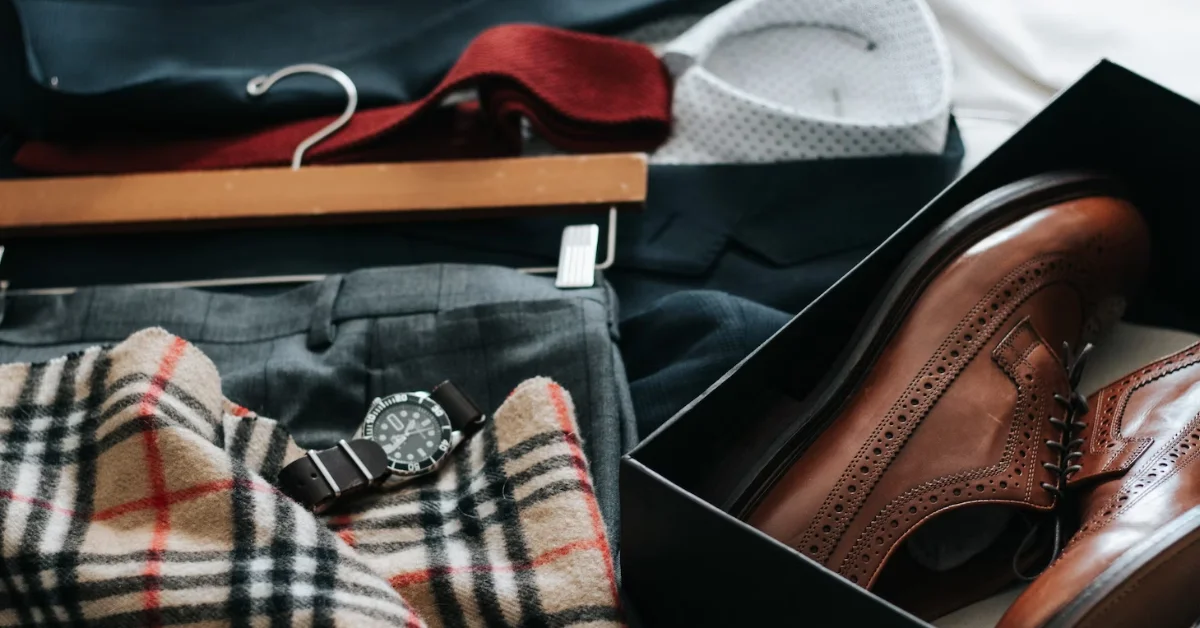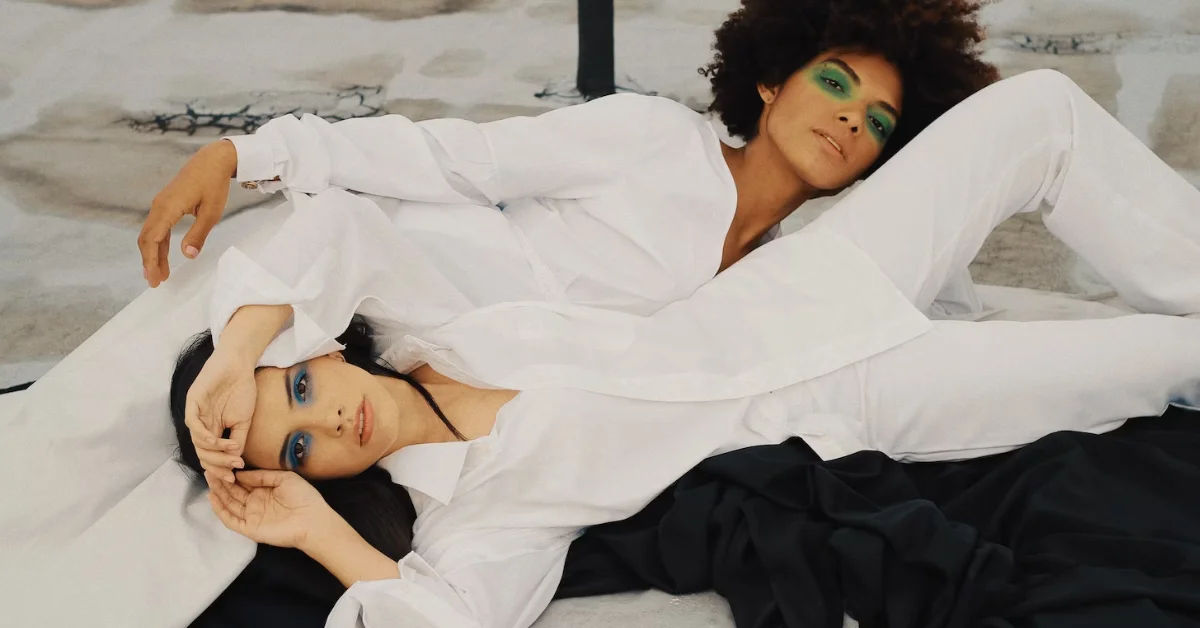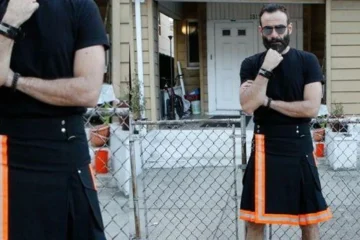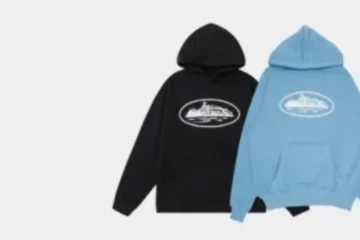Welcome to the mesmerizing world of Extreme Mega Fashion, where imagination knows no bounds, and daring design and audacious flair prevail. This genre challenges conventions, taking us on a thrilling journey where fashion becomes a bold statement, self-expression, and art. In this article, we’ll delve into the historical significance, evolution of trends, influential movements, and the impact of Extreme Mega Fashion icons.
From the roots in countercultures to the avant-garde expressions of Alexander McQueen, Daphne Guinness, and David Bowie, we’ll explore the fashion rebellions that have shaped this extraordinary realm. Subcultures like Punk Couture, Gothic Elegance, and Cyberpunk Chic will unfold, revealing the diversity that fuels Extreme Mega Fashion. Get ready to witness the fusion of technology, the influence of street fashion, and the emergence of sustainable practices, all captured through the lens of innovative fashion photography.
Historical Significance of Extreme Mega Fashion
Roots of Extreme Fashion:
The origins of Extreme Mega Fashion can be traced back to the rebellious spirit of 20th-century countercultures. The defiance of punk and the introspection of goth laid the groundwork for fashion that defied traditions. It was a declaration: “We will not conform.” This bold stance against the norm became the driving force behind Extreme Mega Fashion.
Influential Countercultures:
As we explore the historical significance, it’s crucial to understand how Extreme Mega Fashion is deeply rooted in cultural and social changes. From the groundbreaking designs of Vivienne Westwood and Malcolm McLaren during the punk movement to the timeless elegance of Coco Chanel, fashion has been a reflection of societal ideals and attitudes.
Fashion Icons Who Challenged the Norm:
Alexander McQueen, a mysterious maverick of fashion, left an indelible mark with his dark and dramatic designs. Daphne Guinness, an eccentric muse, blurred the lines between fashion and performance art. David Bowie, the style chameleon, revolutionized both music and fashion with his ever-transforming identities. These icons questioned standards and pushed the boundaries of what was deemed acceptable.
Evolution of Fashion Trends
Traditional vs. Extreme Mega Fashion:
While the fashion industry traditionally set norms and trends for traditional wear, Extreme Mega Fashion emerged as a liberating force. It encourages individuals to break stereotypes, honoring the freedom to mix styles and stand out. In this realm, individuals can express themselves without judgment by embracing the unexpected.
Subculture and Street Fashion Influences:
Extreme Mega Fashion borrows from various subcultures and street fashion styles, seamlessly blending elements from punk, goth, rave, and hip-hop. This avant-garde mix allows people to express themselves boldly and defy conventional fashion rules. The streets become a canvas for unique, eclectic, and rule-breaking fashion statements.
Impact of Social Media and Internet Culture:
The growth of Extreme Mega Fashion owes much to the rise of social media and internet culture. Platforms like Instagram, TikTok, and YouTube have become powerful tools for fashionistas to showcase their distinctive styles and gain fame. Fashion influencers and content creators have played a pivotal role in popularizing Extreme Mega Fashion trends, making it more accessible to a global audience.

Extreme Mega Fashion Movements
Punk Couture: Origins and Influences:
Punk Couture, born from the rebellion of underground music bands in the 1970s, laid the foundation for Extreme Mega Fashion. It was a movement that embraced DIY aesthetics and uninhibited self-expression. Designers like Vivienne Westwood and Malcolm McLaren transformed punk’s raw energy into fashion statements that challenged the establishment.
Famous Punk Fashion Designers:
Vivienne Westwood and Malcolm McLaren were instrumental in bringing punk aesthetics to the forefront of fashion. Their designs incorporated distressed denim, studded leather jackets, and anarchic accessories, challenging traditional notions of style.
Modern Interpretations:
Punk Couture never died; it evolved. Distressed denim, studded leather jackets, and anarchic accessories continue to revive the spirit of punk on today’s runways. The rebellious ethos of Punk Couture continues to inspire contemporary designers who push the boundaries of fashion.
Gothic Elegance: The Dark Elegance:
Gothic fashion, characterized by its adoration of gloom and sorrow, brings Victorian aesthetics into a modern context, creating a fascinating and enigmatic look. The Dark Elegance of Gothic fashion is a celebration of the mysterious and the romantic.
Key Gothic Fashion Elements:
Gothic elegance features dark, romantic materials, lace, and ornate embellishments. This style, born from a blend of fashion and morbid love, captivates with its intricate details and timeless allure.
Famous Gothic Fashionistas:
Dita Von Teese and Robert Smith are among the prominent figures who have embraced Gothic fashion, leaving an indelible mark on the world. Their unique interpretations of Gothic elegance have influenced the broader fashion landscape.
Cyberpunk Chic: Technology and Style Fusion:
Cyberpunk Chic welcomes the future with open arms. This movement in Extreme Mega Fashion draws inspiration from a futuristic, neon-lit, and dystopian aesthetic. It’s a marriage of high-tech elements with avant-garde design.
Fashion Innovations of Tomorrow:
Cyberpunk Chic goes beyond traditional materials, incorporating high-tech fabrics, augmented reality couture, and even gadget-integrated apparel. It’s a nod to a future where fashion and technology seamlessly merge.
Cyberpunk in Pop Culture:
The influence of Cyberpunk Chic extends beyond the runway. Films like “Blade Runner” and “The Matrix” have catapulted this genre into popular culture, shaping both fashion and technology trends.
Extreme Fashion Icons
Alexander McQueen:
McQueen’s Scariest Designs: Alexander McQueen, a trailblazer in Extreme Mega Fashion, was known for his dark and dramatic designs that questioned traditions. From the controversial “bumster” pants to avant-garde runway spectacles, McQueen’s creations sparked conversations and challenged the status quo.
Legacy in Extreme Fashion: While the fashion industry mourned McQueen’s untimely death in 2010, his legacy continues to inspire designers to experiment, push boundaries, and redefine the possibilities of fashion. McQueen’s impact on Extreme Mega Fashion remains profound and enduring.
Daphne Guinness:
Eccentric Muse: Daphne Guinness, a living art form, has carved her own niche in the world of fashion. Her unusual style, which blurs the lines between fashion and performance art, makes her an icon of eccentricity.
Contributions to Extreme Fashion: Guinness’s daring fashion choices have not only made her a fashion icon but have also inspired designers and artists to think outside the box. Her fearless approach to fashion encourages creative expression and pushes the boundaries of conventional style.
David Bowie:
Influence of Bowie on Fashion: David Bowie, the enigmatic musician and style chameleon, revolutionized not only the music industry but also left an indelible mark on fashion. From Ziggy Stardust’s glam rock to the Thin White Duke’s slick refinement, Bowie’s style was as dynamic as his music.
Bowie’s Fashion Icons: Bowie’s fashion legacy includes iconic elements like lightning bolt makeup, glam rock jumpsuits, and an eclectic style that has inspired subsequent generations of fashion enthusiasts.
Fashion Subcultures
Fetish Style: Provocative Subculture:
Fetish Fashion in Popular Culture: Fetish style, a provocative subculture within Extreme Mega Fashion, challenges social norms and pushes boundaries. Elements of BDSM and fetishism find expression in both apparel and accessories, contributing to a unique and daring fashion movement.
Controversies and Acceptance: While fetish fashion has been a means of self-expression and empowerment, it has also sparked controversies, raising discussions around sexuality and consent. The acceptance and integration of fetish style into mainstream fashion highlight the evolving landscape of Extreme Mega Fashion.
Rave Culture: Neon, Glitter, and Electronic Beats:
Hot Fashion Trends: Rave culture, celebrated for its vibrant electronic dance music scene, is a playground for Extreme Mega Fashion. Bright colors, neon, and comfort for long nights of dancing define the fashion trends within this subculture.
Rave Revival: In recent times, a new generation has embraced the vivid and carefree aesthetic of rave culture, leading to a revival of its fashion trends. The influence of rave fashion extends beyond music festivals, impacting mainstream style.
Burning Man Style: Radical Fashion Self-Expression:
Playa Fashion Basics: Burning Man, an annual event in the Nevada desert, goes beyond being a festival; it’s a canvas for radical self-expression through clothing. Playa fashion, as seen at Burning Man, is characterized by elaborate costumes, steampunk-inspired clothing, and DIY constructions.
Artist Inspirations: Blending clothing with sculpture, Burning Man fashion is a form of art in motion. It reflects the spirit of self-expression, creativity, and a departure from conventional fashion norms.
Steampunk Feeling: Victoria Meets Tech:
Steampunk Fashion Basics: Steampunk fashion is a whimsical fusion of Victorian style and steam-powered technology set in a mythical environment. Corsets, top hats, goggles, and complex clockwork accessories define the essentials of steampunk fashion.
Steampunk in Literature and Film: This countercultural movement has not only influenced fashion but also made its mark in literature and movies with steampunk settings. The allure of steampunk lies in its ability to transport wearers to a fantastical and imaginative world.
The Art of Extreme Fashion Photography
Pioneers of Fashion Photography: Masters of the Craft:
The realm of Extreme Mega Fashion is magnificently captured through the lens of visionary photographers. Helmut Newton, Guy Bourdin, and Richard Avedon stand as pioneers who elevated fashion photography by pushing aesthetic boundaries and challenging social norms.
Challenged Standards:
Provocative photographers like Newton, Bourdin, and Avedon challenged societal standards through their remarkable work, defining an era and inspiring subsequent generations of photographers to explore the intersection of fashion and innovation.
Lasting Legacy:
The legacy of these pioneers lives on, with their contributions shaping the art of fashion photography and influencing the visual language of Extreme Mega Fashion. Their timeless photographs continue to inspire and evoke emotions, creating an everlasting impact on the world of fashion.
Beautiful Photoshoots and Visionaries: Collaboration at its Best:
Extreme Mega Fashion comes to life through collaborative efforts. Fashion photographers, working in tandem with designers, models, makeup artists, and stylists, create visually stunning and emotionally resonant photoshoots.
Photographs That Move:
From Steven Meisel’s captivating Vogue editorials to Tim Walker’s dreamscapes, certain photoshoots transcend the realm of fashion photography, becoming unforgettable moments of visual storytelling. Each click of the shutter captures an avant-garde moment that defines Extreme Mega Fashion.
The Digital Age and Extreme Fashion Photography:
The digital age has ushered in a new era for Extreme Fashion Photography. Empowered by technology, photographers can experiment, learn, and share their work online without the constraints of traditional film.
Empowering Creativity:
Digital photography has democratized the field, allowing new photographers to experiment with creative concepts and present their work to a global audience. The ability to share instantly on platforms like Instagram has transformed the landscape of Extreme Mega Fashion.
Explore New Dimensions:
Photographers leverage digital alteration to merge reality and fiction, questioning established norms of beauty, gender, and identity. The digital age opens up new dimensions for artistic expression, pushing the boundaries of what is possible in Extreme Fashion Photography.
Social Media’s Impact:
Social media platforms play a crucial role in shaping the narrative of Extreme Mega Fashion. Instagram, in particular, has become a powerhouse for fashion influencers, providing a global stage for showcasing unique styles and inspiring dialogues around Extreme Fashion trends.
Extreme Fashion in Film and Television
Using Costume Design as a Narrative Tool: Beyond Aesthetics:
In film and television, costume design goes beyond mere aesthetics. It serves as a narrative tool, revealing character personalities, and backstories, and contributing to storyline development. Extreme Mega Fashion becomes a medium for conveying character depth, mood, and cultural nuances.
Cosmetic Change: Extreme Mega Fashion on Screen:
Extreme Mega Fashion costumes undergo cosmetic changes to reflect character evolution. Iconic moments such as Uma Thurman’s Mia Wallace in “Pulp Fiction” and Cate Blanchett’s transformation in “Elizabeth” showcase the transformative power of wardrobe choices in storytelling.
Famous Film Extreme Fashion Moments: Blurring Lines:
Certain films blur the lines between fashion and art, challenging traditional definitions. Directors like Baz Luhrmann (“Moulin Rouge!”) and Sofia Coppola (“Marie Antoinette”) use fashion as a visual feast, intertwining it with the narrative to create a unique cinematic experience.
TV Shows That Changed Fashion: Wardrobe Transforming Power:
Television shows like “The Crown” and “The Marvelous Mrs. Maisel” demonstrate that intricate costume design isn’t limited to the big screen. The attention to historical clothing in these shows transports viewers to different eras, highlighting the transformative power of wardrobe choices.
Sustainability and Extreme Fashion
Fighting Extravagance and Eco-Consciousness: A Paradigm Shift:
As Extreme Mega Fashion thrives on extravagance and opulence, a paradigm shift is underway towards a more eco-conscious approach. Designers and brands associated with Extreme Fashion are reevaluating their production processes,
demanding transparency, and exploring sustainable alternatives. This shift represents a commitment to environmental responsibility without compromising the avant-garde essence of Extreme Mega Fashion.
Production Process Rethinking:
The traditional fashion industry has often been critiqued for its environmental impact, but Extreme Mega Fashion is adapting to meet the demands of a more conscious consumer base. From sourcing materials responsibly to implementing ethical labor practices, the production process is undergoing a radical transformation.
Demand for Transparency:
Consumers today demand transparency from the fashion industry. Extreme Mega Fashion, in response, is embracing this call for openness. Designers and brands are providing insight into their sourcing, manufacturing, and distribution processes, fostering a deeper connection with environmentally conscious consumers.
Sustainability in Extreme Fashion:
Sustainability isn’t just a buzzword in Extreme Mega Fashion; it’s a movement. Designers are exploring eco-friendly materials, incorporating recycled elements into their designs, and adopting circular fashion practices. This shift is redefining the narrative around Extreme Fashion, proving that opulence and responsibility can coexist.
Future of Eco-Friendly Extreme Fashion: Innovation and Teamwork:
The future of Extreme Mega Fashion lies in innovation and collaborative efforts. Designers, activists, and consumers are coming together to explore new avenues for sustainable fashion. From biodegradable fabrics to closed-loop production systems, the industry is on the brink of a groundbreaking era.
Consumer Empowerment: Combine Opulence and Responsibility:
Extreme Mega Fashion is recognizing the power of consumer choices. As consumers become more informed and conscientious, their preferences drive change. The industry is witnessing a shift where opulence and responsibility combine, empowering consumers to make choices that align with their values without compromising on style.
Conclusion
In conclusion, Extreme Mega Fashion is more than a style statement; it’s a cultural movement that challenges norms, celebrates diversity, and pushes the boundaries of self-expression. From its rebellious roots in countercultures to the sustainable innovations shaping its future, Extreme Mega Fashion stands as a testament to the ever-evolving nature of style.
This journey through Extreme Mega Fashion touched upon its historical significance, the evolution of trends, and influential movements like Punk Couture, Gothic Elegance, and Cyberpunk Chic. We explored the lives and legacies of fashion icons such as Alexander McQueen, Daphne Guinness, and David Bowie. The article delved into the impact of subcultures like Fetish Style, Rave Culture, and Burning Man Style, emphasizing their role in shaping Extreme Mega Fashion.
As we look ahead, the fusion of opulence and responsibility in Extreme Mega Fashion promises a future where sustainable practices are seamlessly integrated into daring design. The industry is poised for innovative collaborations, and the global community is empowered to influence positive change through conscious choices.



